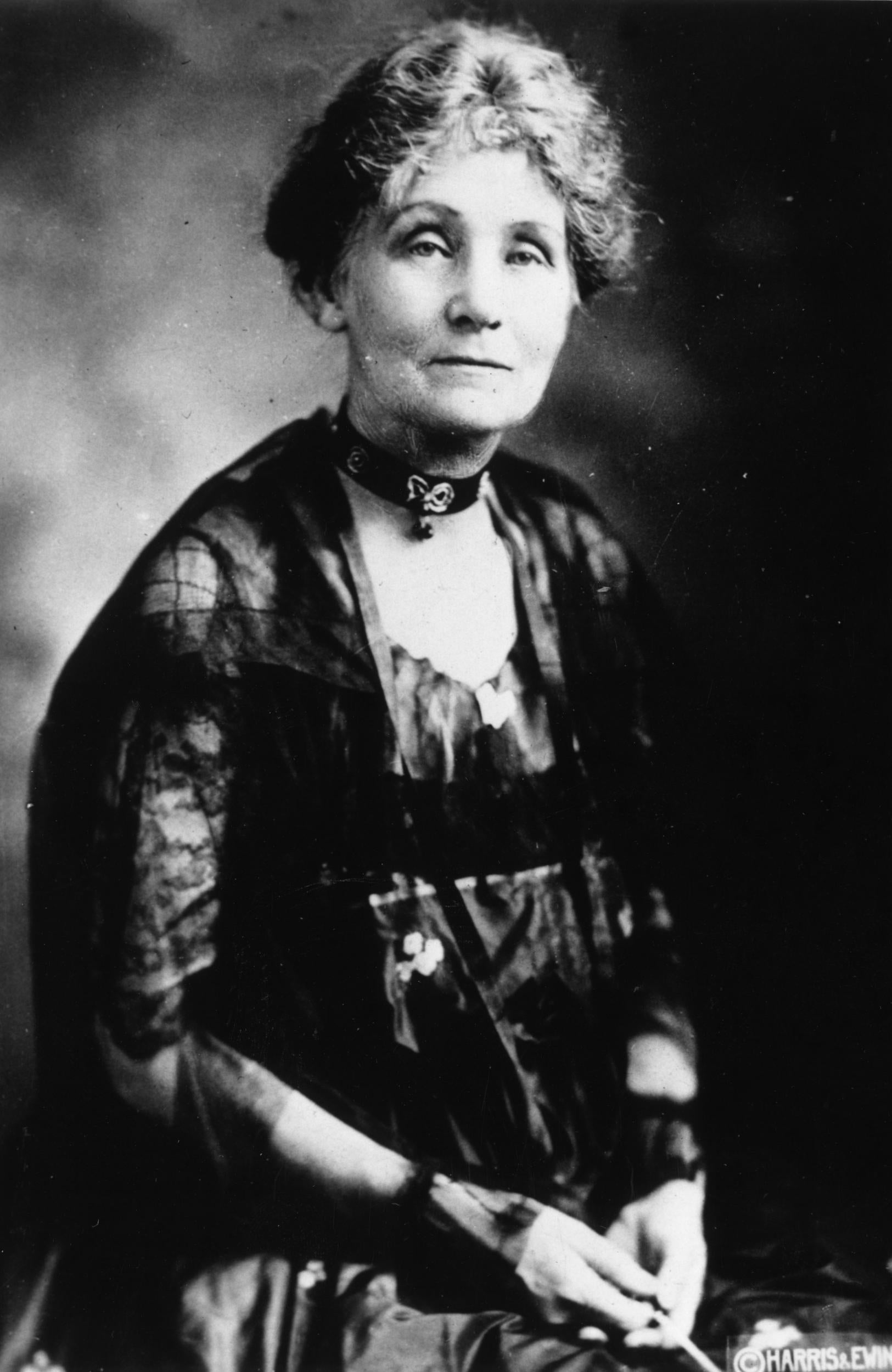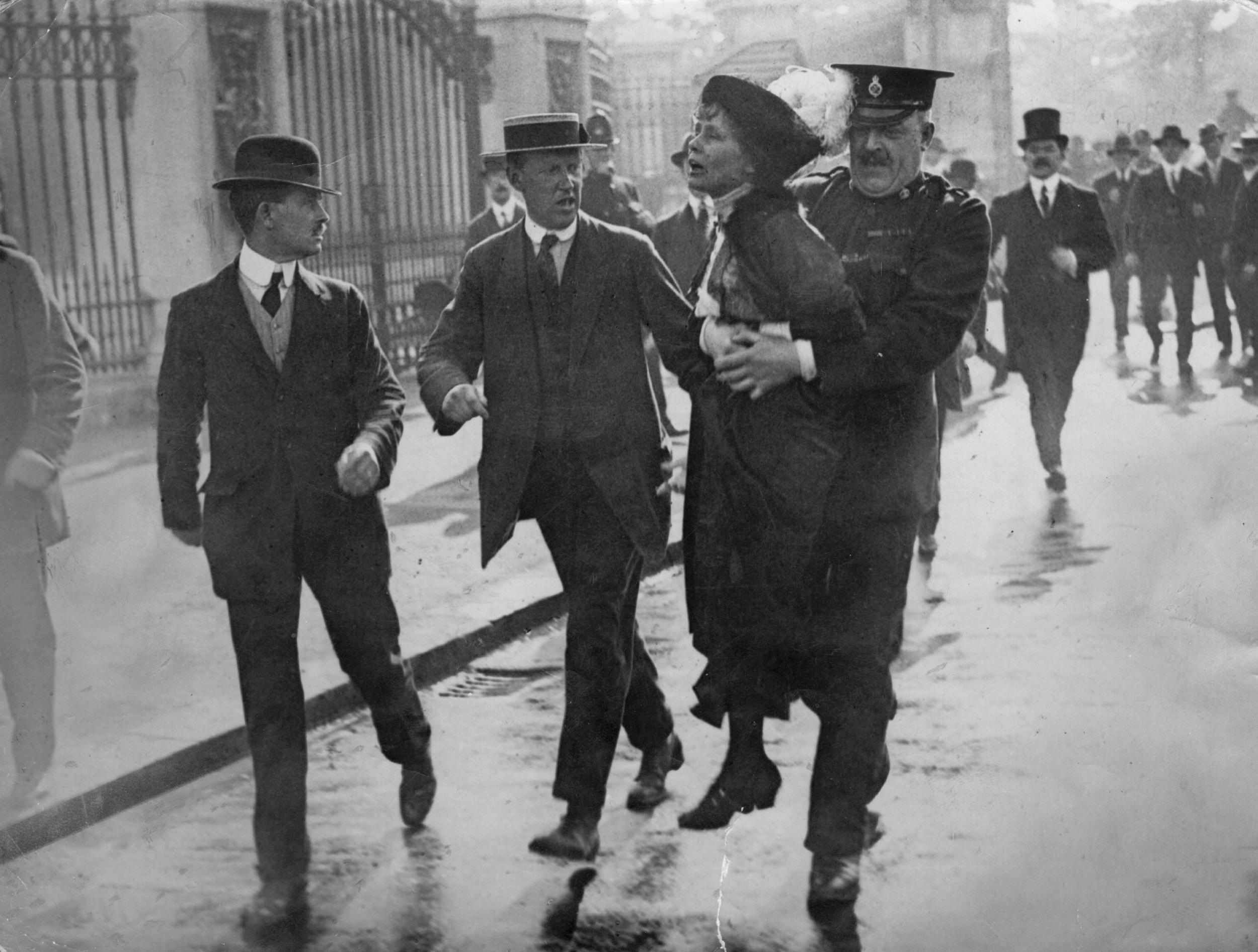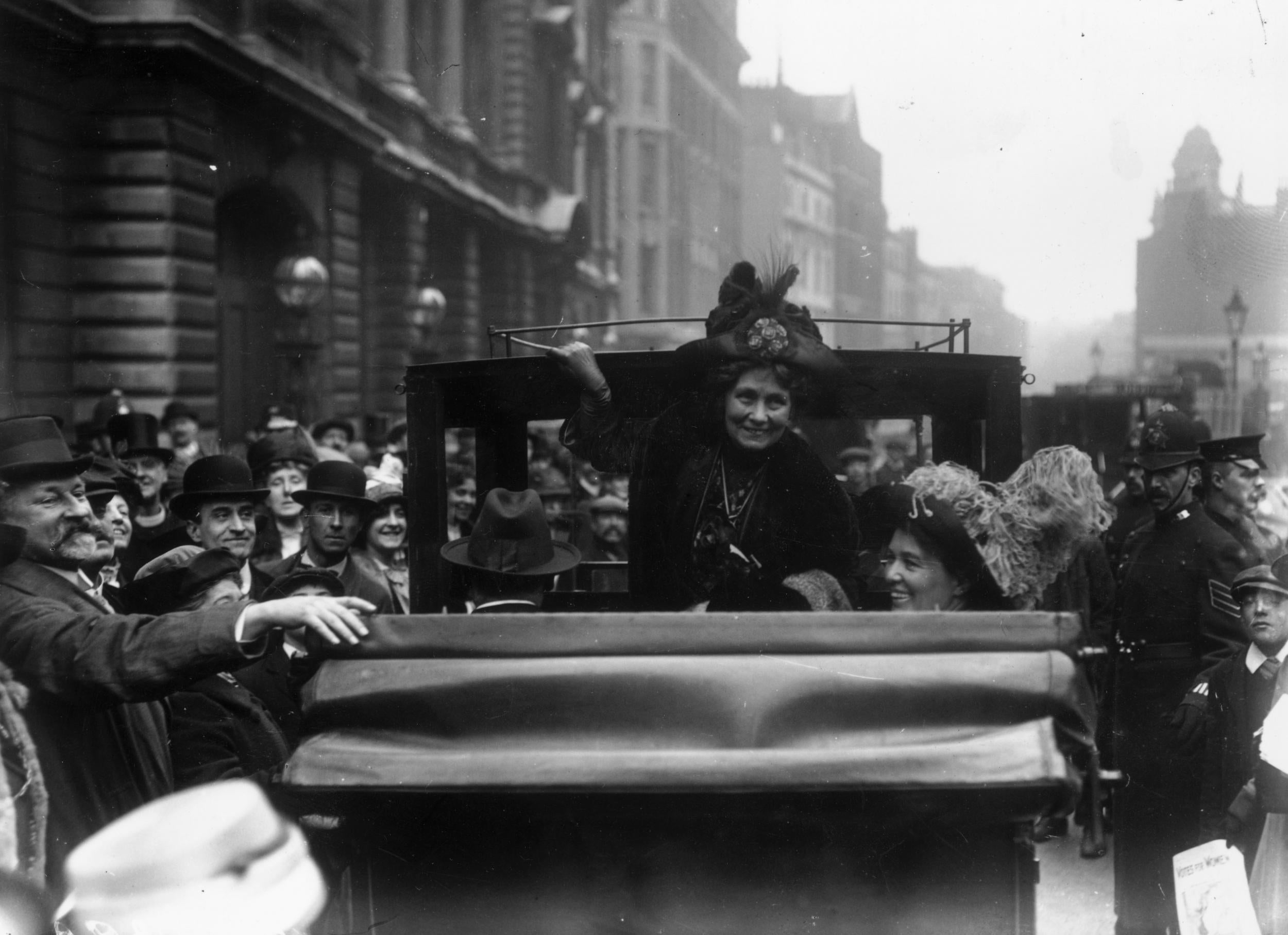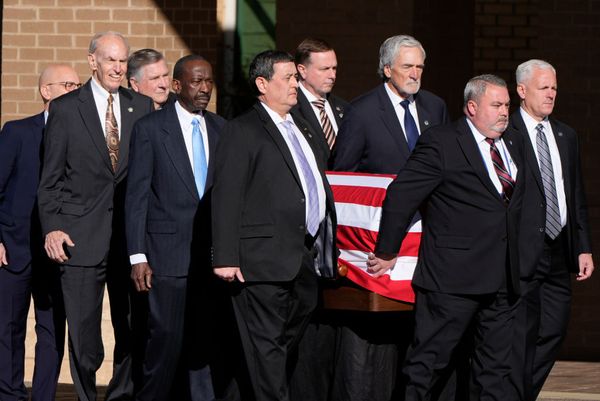As the leader of the suffragette movement, Emmeline Pankhurst campaigned ardently for women to achieve the right to vote.
Pankhurst galvanised women as they fought to be granted the same electoral privileges as their male peers.
After peaceful protests for women's enfranchisement by the peaceful suffrage movement proved unsuccessful, Emmeline Pankhurst mobilised women to adopt more militant protest tactics by forming the Women’s Social and Political Union (WSPU) and organising demonstrations throughout the years.
The media coined the derogatory term "suffragette" to describe them, a denomination that they then claimed for their own.
On Friday 14 December, 100 years since some women voted for the very first time, Pankhurst's achievements are being honoured with the unveiling of a new bronze statue in Manchester, the city where she was born.
A statue memorialising the political activist already exists in Victoria Tower Gardens in London, which was first erected in 1930.
Learn all about Pankhurst's fascinating life, from her progressive upbringing to the legacy that she's left for future generations.
Early life
Born in 1858 in Manchester to Sophia Jane Crane, who actively supported women's suffrage, and Robert Goulden, who campaigned against slavery, Emmeline Goulden was the eldest of 10 siblings.
She became interested in politics from a very young age, with one of her favourite childhood books being Thomas Carlyle’s The French Revolution: A History.
While Craine and Goulden supported women’s suffrage, they didn’t believe in granting Pankhurst the same educational opportunities as her brothers.
Nonetheless, as a teenager Pankhurst learned more about the fight for women’s rights, attending a public meeting about the subject with her mother at the age of 14, where suffragist Lydia Becker was speaking.
Following the talk, Pankhurst later wrote that she had left the event "a conscious and confirmed suffragist".
When she was 20 years old, Pankhurst met her future husband Richard Pankhurst with whom she shared several interests, including a passion for women’s suffrage.
He authored the 'Married Women’s Property Acts' of 1870 and 1882, which fought to allow women to keep the money that they’d earned from property both before and after their marriages.
The pair married in St Luke’s Church in Pendleton, Salford on 18 December 1879 and had five children together.
After almost 20 years of marriage, Richard died from stomach ulcers in 1898.
The beginning of the suffragettes
In 1889, Pankhurst - along with her husband and several others - created the Women’s Franchise League (WFL).
The first WFL meeting was held at the couple’s home in Russell Square in London, which had become a hub for political activists.
The couple had initially moved to the capital so that Richard could attempt to become a Member of Parliament, a venture which proved unsuccessful.
The predominant aim of the WFL was to help some married women achieve the right to vote in local elections.
However, the league disbanded after a short period of time, and Pankhurst and her husband moved back to Manchester.
Following the death of her husband, Pankhurst founded the WSPU in 1903, an organisation that she opened exclusively for women with the motto: "Deeds not words".
With the help of her daughters Christabel and Sylvia, Pankhurst organised rallies and published an official newspaper which they called Votes for Women.

As the years passed, the WSPU began adopting more militant tactics in order to make sure that their voices were heard.
The founding of the WSPU followed the creation of the National Union of Women's Suffrage Societies in 1897, a group that was otherwise referred to as the suffragists.
Their goal was to advocate for women's suffrage through peaceful means, without breaking the law.
Fawcett described their ethos in a speech in 1911, saying that the organisation was "like a glacier, slow moving but unstoppable".
Over the years, members of the WSPU led by Pankhurst took part in large demonstrations, heckled politicians during speeches and became embroiled in violent altercations with the police.
Demonstrations and force-feeding
In March 1912, Pankhurst organised for a series of window smashing campaigns to be conducted by suffragettes in the commercial district of London.
The police responded to the demonstration with extreme force, arresting and imprisoning hundreds of women, including Pankhurst.
While in prison, the women who had been arrested went on hunger strikes, which resulted in them being violently force-fed by officials.
The drawings of women being force-fed in prison that appeared in newspapers of the time became one of the most definitive images of the suffragette movement, and encouraged the public to sympathise with their plight.

In 1913, the government passed the 'Temporary Discharge for Ill-Health Act', informally known as the 'Cat and Mouse Act'.
This allowed prisoners who were being force-fed to be discharged from prison.
However, once they had recovered, they would then be re-arrested and go through the same process.
One of the most defining moments of the women's suffrage movement came in 1913, when Emily Davison died after walking in front of King George V's horse during the Epsom Derby.
Davison had been arrested 10 times, had gone on hunger strike seven times and had been force-fed a total of 49 times.
In her autobiography, Pankhurst described the horror of hearing women being force-fed in prison, writing: "I shall never while I live forget the suffering I experienced during the days when those cries were ringing in my ears."
In 1913, she delivered a speech in Hartford, Connecticut, in which she spoke about the importance of making sure that you're heard when fighting for an importance cause.
"You have to make more noise than anybody else, you have to make yourself more obtrusive than anybody else, you have to fill all the papers more than anybody else, in fact you have to be there all the time and see that they do not snow you under, if you are really going to get your reform realised," she said.
Impact of the war
When World War I began in 1914, Pankhurst decided to cease WSPU's operations so that they could all focus on supporting the war instead.
The organisation declared a "truce" with the British government, with all of the women who'd been retained in prison for suffragette activity consequently released.
Between the years of 1914 and 1918, approximately two million women took on jobs that had been left by the men in military service, increasing the number of women in employment from 24 per cent in July 1914 to 37 per cent in November 1918, according to parliament.co.uk.
Pankhurst was a staunch believer in the war effort, regularly organising rallies and spurring the government to encourage women to take up jobs previously held by men.
While her daughter Christabel helped her mother with the WSPU's new focus on supporting the war, her other daughters, Sylvia and Adela, were pacifists and thus opposed her stance.
In February 1918, nine months before the end of World War I, the British parliament passed the February 1918, nine months before the end of World War I, the British parliament passed the 'Representation of the People Act', also known as the 'Fourth Reform Act'.
The act granted men aged 21 and over the right to vote regardless of whether they owned property or not, in addition to granting the same right to some women aged 30 and over as long as they met certain property qualifications.
It wasn't until 1928 when the 'Representation of the People (Equal Franchise) Act' was passed that all women aged 21 and over were given the right to vote.
Legacy
In 1928, the same year that all women aged 21 and over were granted the right to vote, Pankhurst passed away at the age of 69.
In 1999 she was named one of Time's 100 Most Important People of the 20th Century.
A bronze statue of Pankhurst was unveiled by Prime Minister Stanley Baldwin in Victoria Tower Gardens in London in 1930, close to parliament.

In his speech, he said: "I say with no fear of contradiction, that whatever view posterity may take, Mrs Pankhurst has won for herself a niche in the Temple of Fame which will last for all time."
In 1958, the statue was relocated to another section of the gardens, and a memorial to Pankhurst's daughter Christabel was added to it.
In July 2018, Conservative MP Sir Neil Thorne submitted a proposal for the statue to be moved, a notion that prompted backlash.
The new bronze statue of Pankhurst that's being unveiled in Manchester was created by sculptor Hazel Reeves.
It depicts Pankhurst standing on a chair while giving a public speech.
Titled "Rise up, women", the design was chosen from a shortlist of six options.
Prior to the unveiling of the statue, marchers will gather at the Pankhurst Centre and People's History Museum on Nelson Street, Manchester, before making their way over to St Peter's Square where the statue is situated.







